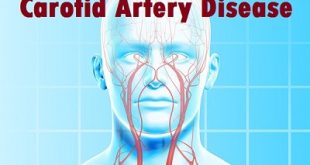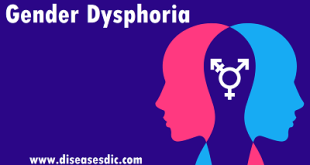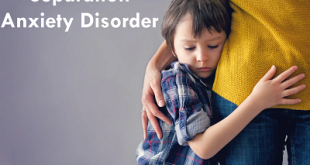Definition
Catatonia is a syndrome characterized by psychomotor abnormalities, often presenting as a state of apparent unresponsiveness to external stimuli or inability to move normally in a person who is awake. Classically associated with schizophrenia, but may also present in bipolar, PTSD, autism, encephalitis, and other neurologic disorders. If left untreated, can progress into malignant catatonia (20% mortality).
A man is sitting with catatonia, making a strange gesture
Classification of Catatonia
There are several proposed classifications of catatonia, which are outside the scope of this article.
Taylor and Fink proposed that catatonia should be classified as an independent entity with three subtypes:
Non-malignant (Kahlbaum syndrome): The most frequent form of catatonia which has a positive response to treatment with benzodiazepines (lorazepam 6-20 mg IV)
Delirious catatonia: Defined by the presence of excitement, altered states of consciousness, and delirium requiring higher doses of BZDs, worsens with antipsychotics (APs) and often requires adjunctive ECT.
Malignant catatonia: Acute onset, fever, autonomic instability, leucocytosis, increased CK. This type responds to ECT. Due to the similarity with the presentation of neuroleptic malignant syndrome, Fink suggested that malignant catatonia and NMS should be considered the same disorder.
One key difference highlighted between NMS and catatonia is that malignant catatonia starts with psychotic excitement while NMS starts with severe extrapyramidal muscular rigidity.
The alternative clinical classification includes:
- Retarded catatonia: A characterized by immobility, mutism, staring, rigidity.
- Excited catatonia: A less common presentation in which patients develop prolonged periods of psychomotor agitation.
Catatonia pathophysiology
The pathophysiology of catatonia is not fully understood, but as imaging studies have improved more structures and pathways have been implicated in the pathogenesis of this syndrome. Using FMRI imaging, dysfunction has been seen in the right medial orbitofrontal and lateral orbitofrontal prefrontal cortex. The right motor cortex has shown atypical lateralization after patients who were suffering from catatonia were given lorazepam. Dysfunction in GABA, glutamate, serotonin, and dopamine transmissions have been implicated in the initiation and progression of catatonia symptoms through clinical findings of catatonia as a result of agents that disrupt these pathways or agents that affect these pathways relieving the symptoms of catatonia.
Causes of Catatonia
The DSM-5 doesn’t identify a specific cause of catatonia but it associates it with symptoms of other conditions.
Mental health conditions that may include catatonia include:
- Depression
- Bipolar disorder
- Conditions that involve psychosis, such as schizophrenia
- Neurodevelopmental disorders, such as ADHD or autism
- Substance use disorders
Catatonia can also happen with certain medical conditions, including:
- Head trauma
- Cerebral folate deficiency
- Certain autoimmune disorders
- Diabetic ketoacidosis
Catatonia symptoms
It includes different signs and symptoms. The following are possible signs noted in patients with catatonia.
- Automatic obedience – The patient automatically obeys all instructions given by the doctor.
- Ambitendency – The patient alternates between cooperating with the doctor’s instructions and resisting them.
- Aversion – The patient turns away when he or she is being spoken to.
- Echopraxia – The patient imitates the activities of the person speaking with him or her.
- Excitement – The patient engages in excessive and purposeless action that is not driven by outside stimuli.
- Negativism – The person is always having negative thoughts and feels sad every day.
- Stupor – This is one of the common signs of catatonia. It is characterized by a lack of mobility and speech.
- Posturing – The person remains in the same posture for a long period of time.
- Mutism – The person is verbally unresponsive and refuses to speak.
- Staring – The individual’s eye is fixed on a particular space and open for long periods of time.
Risk factors
The following are the risk factors:
- Prior episodes of catatonia
- Current or past extrapyramidal symptoms
- Mood disorders with psychomotor changes
- Autism spectrum disorder
- Psychotropic medications (antipsychotics, antidepressants)
- Substances (cocaine use, or alcohol/benzodiazepine withdrawal)
- Withdrawal of long-term anticholinergic use
- Electrolyte disturbances (hyponatremia, hypomagnesemia, and low serum iron)
Additional risk factors include:
- Central nervous system disease (frontal, basal ganglia, brainstem, pontine, or cerebellar)
- Epilepsy
- Dehydration
- Weight loss
- Medications that lower seizure threshold.
Complications
It can put your safety in jeopardy, especially when it involves:
- Stupor
- Refusal of food or water
- Fever
- Repeated movements that lead to injury or self-injury, such as kicking or head-banging
It often requires hospitalization until symptoms improve, especially when the person with catatonia:
- Has other serious medical or mental health symptoms
- Can’t eat or drink
- Can’t take care of basic needs
A healthcare team can treat catatonia while also monitoring vital signs and providing hydration and nutrients.
Severe or untreated catatonia can have severe health effects, including:
- High blood pressure
- Blood clots in the lungs
- Severe swelling
- Muscle tissue breakdown
- High fever
- Eye infection
- Kidney failure
If you believe a loved one may have catatonia, you may want to get medical support for them.
Diagnosis of Catatonia
There are different tests a doctor might do to find out if someone has catatonia and what is causing it. Finding out what might have caused catatonia can help a doctor to treat the catatonia itself.
If it is thought you might have catatonia, your doctor will consider the following things:
- History – The doctor will talk to you or the person caring for you to find out about your history. They will also want to know how you have been feeling recently. You or the person caring for you should let them know about any drugs you are taking, any head injuries you might have had and any other health problems.
- Observation – The doctor might observe your behaviour during an appointment or when you are on a hospital ward.
- Examination – The doctor might choose to examine you to make sure that your body is working properly. This should be a full physical examination of your heart, lungs, abdomen and nervous system.
- Blood tests – The doctor might take some blood tests. These will look to see if you have any infections or any problems with how your body is working.
- Brain scan – After doing an examination and taking blood tests, the doctor might do a brain scan if they need more information. The scan will let your doctor see your brain in more detail.
- Electroencephalogram (EEG) – This test monitors the electrical activity in your brain. It can be used to see if you have a neurological condition. EEGs are performed by attaching small sensors to your head and using a machine to pick up the electrical signals produced by your brain. You can find out more about EEGs
Treatment
Electroconvulsive therapy (ECT) and medications are the only two clinically proven treatment methods to treat catatonia. Common treatment approaches are mentioned below.
Medications
The first approach is usually using medications to treat the symptoms. The medications can include benzodiazepines, muscle relaxants, and in some cases tricyclic antidepressants. The first medication that is usually prescribed is benzodiazepines 9. This medication includes clonazepam (Klonopin), lorazepam (Ativan), and diazepam (valium). This medication helps to increase gamma-aminobutyric acid (GABA) in the brain. People with a high ranking on Bush Francis Catatonia Rating Scale (BFCRS) usually respond well to benzodiazepines treatment.
There are other medications that are prescribed to the patient suffering from this disorder. They include:
- Amobarbital (barbiturate)
- Bromocriptine (Cycloset, Parlodel)
- Carbamazepine (Carbatrol, Epitol, Tegretol)
- Lithium Carbonate
- Thyroid hormone
- Zolpidem
The duration of medication is usually 5 days. If the symptoms don’t start to get better after 5 days the doctor may resort to other methods of treatment.
Electroconvulsive Therapy (ECT)
Electroconvulsive therapy 10 is found to be effective in treating patients suffering from this disorder. This therapy takes place in a hospital under medical supervision. The procedure is completely painless. At first, the person is sedated and a special machine is connected to deliver an electric shock to the brain. This procedure causes a one-minute seizure in the individual. This seizure is believed to cause changes in the neurotransmitters of the brain. This method has been found helpful to ease the symptoms.
Prevention
Even when compared to other patients with mental illnesses, patients with catatonia have a significantly increased mortality. Rates of certain medical complications are high, notably infections, rhabdomyolysis, pressure sores, dehydration, venous thromboembolism, cardiac arrhythmia, renal failure, and neuroleptic malignant syndrome.
| Complication | Prevention and management |
| Infection |
|
| Rhabdomyolysis & pressure sores |
|
| Dehydration |
|
| Venous thromboembolism |
|
| Malnutrition |
|
 Diseases Treatments Dictionary This is complete solution to read all diseases treatments Which covers Prevention, Causes, Symptoms, Medical Terms, Drugs, Prescription, Natural Remedies with cures and Treatments. Most of the common diseases were listed in names, split with categories.
Diseases Treatments Dictionary This is complete solution to read all diseases treatments Which covers Prevention, Causes, Symptoms, Medical Terms, Drugs, Prescription, Natural Remedies with cures and Treatments. Most of the common diseases were listed in names, split with categories.








how to treat it
The treatment is elaborated in the following link. Kindly have a glimpse.
https://diseasesdic.com/catatonia-classification-symptoms-and-treatment/